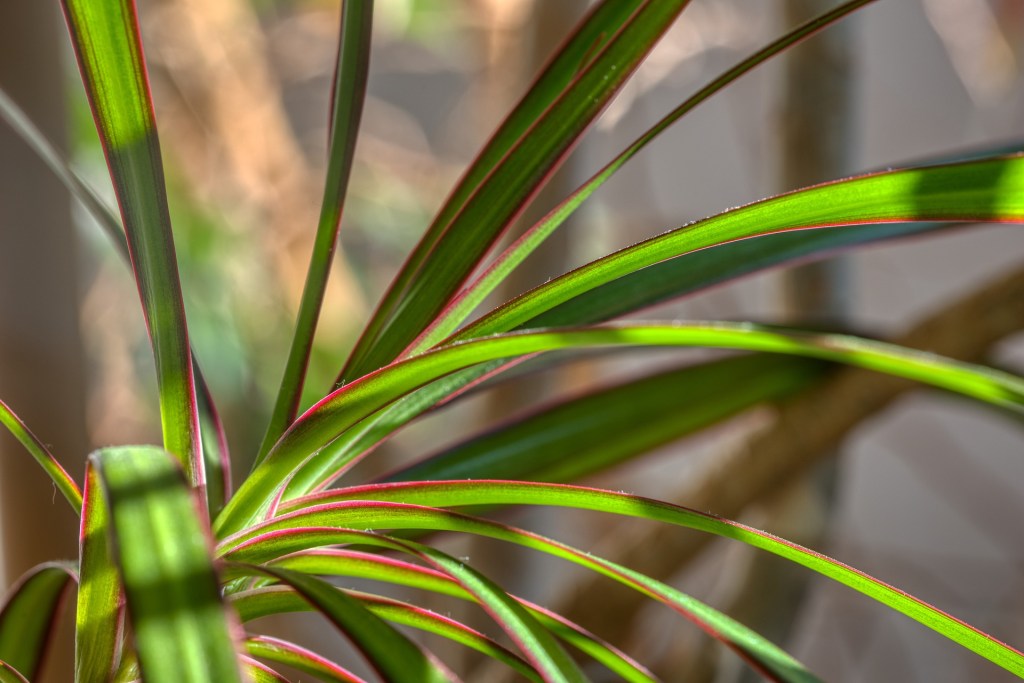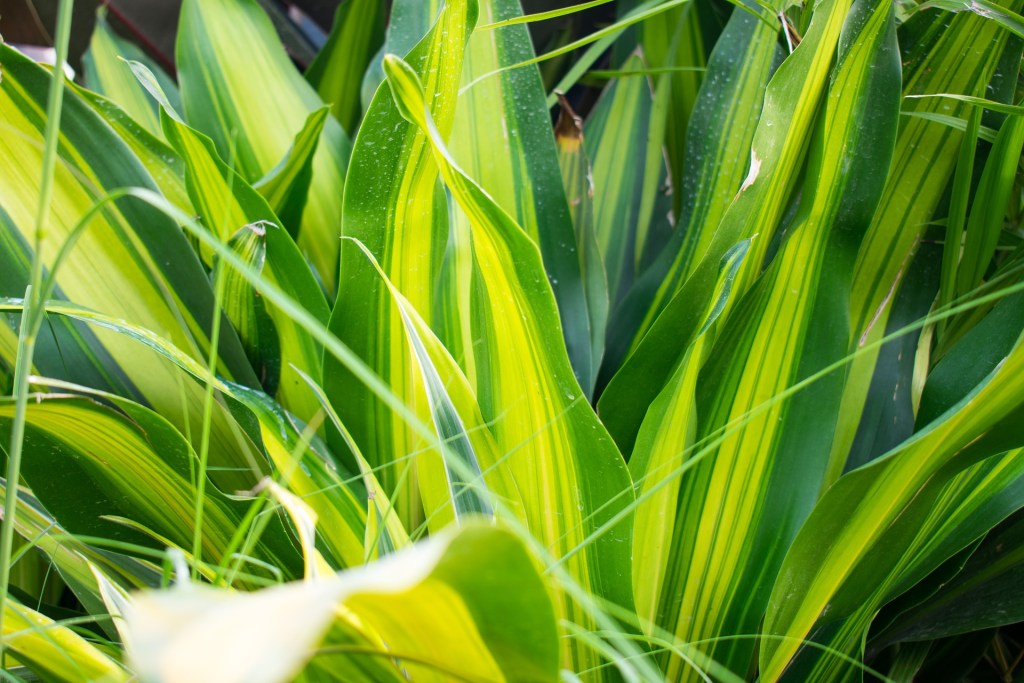While they might not get the same buzz as monsteras and hoyas, dracaenas are some of the easiest and most beautiful houseplants to maintain. You can often find them at farmers markets, grocery stores, and nurseries at excellent prices because of just how ubiquitous they are! Plus, whether they’re tall trees or compact shrubs, dracaenas can add an elegant texture to your home. So how do you pick the right dracaena for you and properly maintain it? Keep reading for our top dracaena care tips.

What dracaenas look like
Dracaenas come in a variety of different patterns and shapes. Smaller types may stay around one foot tall, while the bigger ones can grow up to six feet indoors. Most dracaenas start out with spiky, lanced-shaped leaves that almost appear like blades of grass. As some grow older and bigger, their stalks thicken, and their leaves slightly curve outwards, giving them a tree-like silhouette. Dracaena leaves can be a solid forest green color or have red, yellow, light green, or white stripes.
So what are some common varieties? The dracaena marginata, also known as the dragon tree, has thin stalks with grass-like leaves that feature red edges. The dracaena fragrans, also known as the corn plant, has a thick trunk with lance-like leaves that shoot out from the central stalk.
No matter if your personal style leans towards bold patterning or minimalist monochromatic coloring, a dracaena is a foolproof choice with many size options for greening your space.

How to care for a dracaena
Dracaenas are relatively low-maintenance plants, but you do need to pay attention to them to help them flourish. Ahead, we’ve rounded up tips for keeping your dracaena healthy and happy.
- Watering: Dracaenas can withstand periods of drought, but they generally appreciate being watered whenever the top inch of their soil becomes dry. Overwatering can pave the way to dreaded root rot, but the opposite route may pose an issue as well. Underwatering and low levels of humidity can cause your dracaena to develop browning tips. To manage humidity issues, keep your plant by a humidifier or leave it by a tray of water. Another cause behind crispy edges is hard water. The salts in hard water can cause dracaenas to get browning tips, so counter this issue by using filtered water or leaving out tap water a day or two before you pour it into your soil.
- Temperature: Since they’re tropical plants, dracaenas need warm temperatures to thrive. They go dormant in the winter and may lose a few leaves—during this time, cut back on watering and fertilizing your plant.
- Lighting: Dracaenas are low-light tolerant, but you still want to give them bright indirect light to encourage growth. Make sure not to leave them in bright direct light, as direct sunlight can brown their edges. If you notice that your leaves are small or the variegation is fading, this is your sign to leave your plant in stronger lighting.
- Feeding: Dracaenas aren’t heavy feeders—in fact, over-feeding them can burn their tips! You can dilute liquid all-purpose fertilizer and feed your plant once a month during the growing season. In fact, you can get away with fertilizing your dracaena once or twice during the entirety of spring and summer.
- Removing pests: Dracaenas don’t typically attract pests, but you may encounter pesky crawlers from time to time. Occasionally check the underside of the sword-like leaves for critters such as scale, mealybugs, and spider mites. When left to their own devices, pests can stunt your plant’s growth and slowly kill it by sucking out sap from the leaves. More often than not, you can get rid of them by spraying your leaves with a strong blast of water from your faucet or garden hose. Apply neem oil to the foliage—this natural insecticide keeps insects from feeding and reproducing, so they’ll inevitably die off.
Although dracaenas might not get as much attention as some trendier houseplants, they can definitely make for steadfast houseplant companions. Ultimately, they don’t require a lot of maintenance—just pay attention to any pests or browning foliage! With a little bright indirect light, moderate watering, and a feeding once in a blue moon, you’ll have a healthy dracaena to show off in your collection.
Editors' Recommendations
- Stunning Monstera plants that you should add to your indoor plant collection
- Beyond basil and cilantro, add these unique plants to your indoor herb garden
- 5 easy-care spider plant varieties perfect for any home garden
- Easy hoya plants to add to your indoor plant collection
- Do ZZ plants cause cancer? Here’s the definitive answer




